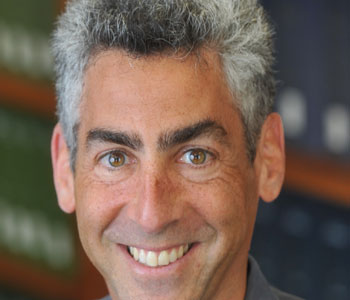Frank Dikötter
Mao’s Great Famine: The History of China’s Most Devastating Catastrophe, 1958-1962
Walker Books, US / Bloomsbury, UK
448 pages, 9 1/4 x 6 inches
ISBN 978 0802777683
My goal was to write a detailed chronicle of an era in Chinese history that is much speculated about, but has never before been fully documented.
Between 1958 and 1962, Mao Zedong threw his country into a frenzy with the Great Leap Forward, an attempt to catch up and overtake Britain in less than 15 years. The experiment ended in the greatest catastrophe China had ever known, destroying tens of millions of lives.
The public knows very little about this—because access to Communist Party archives has long been restricted to all but the most trusted historians.
A new archive law in China has opened up thousands of central and provincial documents, and thus fundamentally changed the way one can study the Maoist era.
Archival research led to astonishing discoveries. Over the course of three years of rummaging through dozens of archives all over China, I found secret reports from the Public Security Bureau, detailed minutes of top party meetings, unexpunged versions of important leadership speeches, surveys of working conditions in the countryside, investigations into cases of mass murder, confessions of leaders responsible for the deaths of millions of people, inquiries compiled by special teams sent in to discover the extent of the catastrophe in the last stages of the Great Leap Forward, general reports on peasant resistance during the collectivization campaign, secret opinion surveys, letters of complaint written by ordinary people and much more. The bulk of this material has never been seen before.
The book blends accounts of what happened in the corridors of power—the vicious backstabbing and bullying tactics that took place among party leaders—with accounts of the everyday experiences of ordinary people.
Far from being the program that would lift China among the world’s superpowers and prove the power of communism, as Mao imagined, the Great Leap Forward transformed the country in the other direction.
China became the site not only of one of the most deadly mass killings of human history, as at least 45 million people were worked, starved or beaten to death, but also the greatest demolition of real estate in human history, as up to a third of all housing was turned into rubble. The experiment was a catastrophe for the natural world as well, as the land was savaged in the maniacal pursuit of steel and other industrial accomplishments.

China became the site also of the greatest demolition of real estate in human history, as up to a third of all housing was turned into rubble.
Mao’s Great Famine recasts the era of Mao Zedong and the history of the People’s Republic of China. Here are my key arguments:
1. The famine did not last three years, as is often thought, but five years, starting in early 1958 and ending by late 1962.
2. The book uses a wealth of archival evidence to capture how and why decisions that led to the famine were taken at the top and how these decisions affected the lives of ordinary people on the ground.
3. The book shows how people of all walks of life had to hide, steal, cheat, pilfer, forage, smuggle, trick, manipulate or otherwise outwit the state in order to survive, including resorting to armed rebellion and assaults on granaries or trains.
4. China went on an international shopping spree in 1958. As the bills were coming in, Zhou Enlai, with the support of his colleagues and the backing of the Chairman, relentlessly pressed the countryside into fulfilling ever greater procurements in order to meet foreign commitments.
5. The idea that the state mistakenly took too much grain from the countryside because it assumed that the harvest was much larger than it was is largely a myth—at most partially true for the autumn of 1958 only. In most cases the party knew very well that it was starving its own people to death. At a secret meeting in the Jinjiang Hotel in Shanghai on the 25th of March 1959, Mao specifically ordered the party to procure up to one third of all the grain, much more than had ever been the case. At the meeting he announced that “When there is not enough to eat people starve to death. It is better to let half of the people die so that the other half can eat their fill.”
6. The book is the first to use a whole range of archives to come up with an estimate of at least 45 million premature deaths, instead of the usual estimate of 30 to 32 million based on official population statistics.
7. By a very rough approximation, between 6 and 8 per cent of these victims, or 2 to 3 million people, were buried alive, tortured or beaten to death.
8. Many of the victims did not die because there was no grain available in the villages. Instead they were deliberately and selectively deprived of food by local cadres because they were relatively rich, dragged their feet, spoke out, or simply were not liked, for whatever reason, by whoever wielded the canteen ladle.
9. Many people vanished because they were too old, weak or sick to work and hence unable to earn their keep; they were considered to be expendable by the state.
10. Not only Mao, but also other senior leaders were willing to condone the deaths of millions of people in the Great Leap Forward. In 1962, having lost about ten million people in Sichuan, provincial leader Li Jingquan compared the Great Leap Forward to the Long March in which only one in ten had made it to the end: “We are not weak, we are stronger, we have kept the backbone.”
11. In the midst of famine China sharply increased the amount of free economic aid and interest-free or low-interest loans to other countries. China also shipped grain for free to allied countries.
12. Up to 30 or 40 per cent of all housing was turned into rubble, as homes were pulled down to make fertilizer, to build canteens, to relocate villagers, to straighten roads, to make place for a better future beckoning ahead or simply to punish their occupants.
13. A prolonged and intense attack on nature claimed up to 50 per cent of all trees in some provinces, while dams and canals, built by hundreds of millions of farmers at great human and economic cost, were for the greatest part rendered useless or even dangerous, resulting in land slides, river silting, soil salinization and devastating inundations.
14. Detailed studies conducted at the time show that deforestation, soil erosion, water loss as well as grandiose irrigation schemes severely disturbed the ecological balance, worsening the impact of inundations and droughts described by the leadership as “natural catastrophes.”
Thanks to extraordinarily rich archives, the reader can get much closer to every aspect of life and death during Mao’s Great Famine than ever before. But nothing illustrates the desperation for food quite as well as the eating of mud by starving villagers. Here is what happened in a county in Sichuan province, where close to ten million people died unnecessarily from 1958 to 1962:
When nothing else was left, people turned to a soft mud called Guanyin soil – named after the Goddess of Mercy. A work team sent by Li Jingquan was taken aback by what they saw in Liangxian county, Sichuan. It was a vision of hell, as serried ranks of ghostly villagers queued up in front of deep pits, their shrivelled bodies pouring with sweat under the glare of the sun, waiting for their turn to scramble down the hole and carve out a few handfuls of the porcelain-white mud. Children, their ribs starting through the skin, fainted from exhaustion, their grimy bodies looking like mud sculptures shadowing the earth. Old women in ragged clothes burned paper charms and bowed, hands folded, mumbling strange incantations. A quarter of a million tonnes were dug out by more than 10,000 people. In one village alone 214 families out of a total of 262 had eaten mud, several kilos per person. Some of the villagers filled their mouths with mud as they were digging in the pit. But most of them added water and kneaded the soil after mixing it with chaff, flowers and weeds, baking mud cakes that were filling, even if they provided little sustenance. Once eaten the soil acted like cement, drying out the stomach and absorbing all the moisture inside the intestinal tract. Defecation became impossible. In every village several people died a painful death, their colons blocked up with soil.

Nothing illustrates the desperation for food quite as well as the eating of mud by starving villagers.
What happened in China between 1958 and 1962 amounts to mass murder of gargantuan proportions. This still remains little known outside specialist circles.
I very much hope that this book will contribute to making Mao’s Great Famine as well known as the two other man-made catastrophes of the twentieth century, the Holocaust and the Gulag.




We don't put paywalls. We don't distract you with ads. We don't sell your data.
Please help to keep this running!